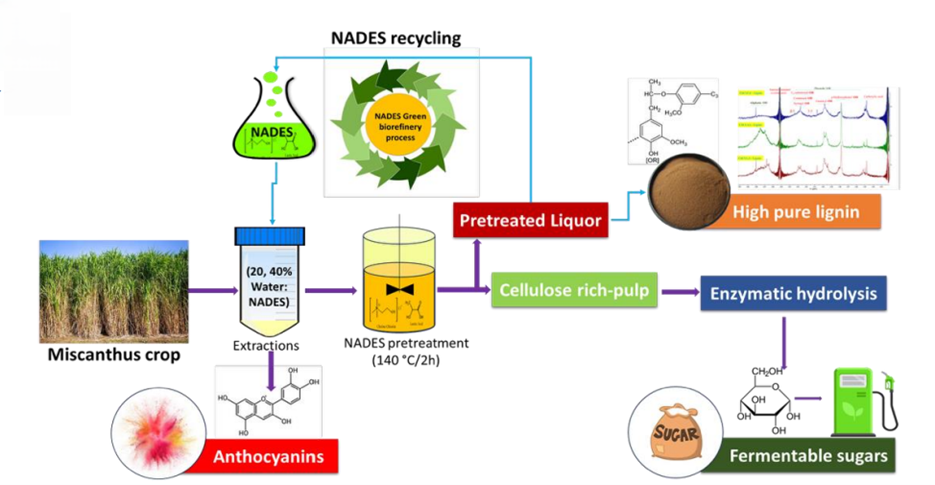Integrated Green Biorefinery for the Production of Anthocyanins, Fermentable Sugars, and High Pure Lignin from Miscanthus × giganteus
Themes: Conversion
Keywords: Biomass Analytics, Feedstock Bioprocessing, Inter-BRC, Miscanthus
Citation
Raj, T., Singh, V. April 25, 2025. Data from: “Integrated Green Biorefinery for the Production of Anthocyanins, Fermentable Sugars, and High Pure Lignin from Miscanthus × giganteus.” University of Illinois. DOI: 10.13012/B2IDB-2286021_V1.
Overview

Miscanthus x giganteus (Mxg) is a promising perennial crop for producing natural colorants, renewable fuels, and bioproducts. However, natural recalcitrance and high pretreatment cost are major barriers to their complete conversion. In this study, a green processing method has been investigated for efficient recovery of natural pigments (anthocyanins), fermentable sugars, and pure lignin from Mxg genotypes using choline chloride-based natural deep eutectic solvents (NADES) systems. Interestingly, choline chloride: lactic acid (ChCl: LA) NADES-processed biomass resulted in 67.8 ± 2.1 μg g−1 of anthocyanins from dry biomass. A maximum of 87.4%–94.1% glucose yield was achieved after enzymatic saccharification. The effective extraction of lignin with high purity with higher β-aryl ether (βO4) bonds from advanced crops is crucial for lignin valorization. Notably, highly pure lignin (≈93.4% ± 1.4%) is achieved after low-temperature NADES pretreatment while retaining lignin’s native structure. 31P nuclear magnetic resonance demonstrated that total phenolics for ChCl: LA-lignin resulted in 1.20 mmol g−1 hydroxyls. The relative monolignol composition of syringyl (S), guaiacyl (G), and p-hydroxyphenyl (H) is 19.0, 65.7, and 14.3%, respectively, as evidenced by heteronuclear single quantum coherence analysis. This study provides a novel approach for obtaining high-purity lignin for catalytic depolymerization for oligomers and bifunctional monoaromatics production and leverages current cellulosic biorefinery technologies.
Data
- Anthocyanins
- Compositional analysis
- Enzymatic hydrolysis yield
- X-ray diffractogram data